EV Charging Hiccups Remedied by Home Charge Adapters
Versatility can be a problem with EV charging at home. But the remedy is inexpensive and simple if you get a charging adapter.

Home EV Charging Has Hurdles if You Want to Charge a Car with a Different Plug.
When I had a home charger installed for my Tesla Model Y, I didn’t think too much about anything other than the sheer joy of never stopping at a gas station unless I wanted a Coke and some Nacho Cheese Doritos. What I didn’t think too much about was how nice it would be for other people to use my Tesla charger, or to be able to use my charger with other EV’s that I test.
Obviously, I had always thought it would be nice to be able to charge my test cars at home, but I liked using public chargers so I understood the process and could articulate public charging’s strengths and “areas of opportunity.” But when I got my Tesla charger adapter, I realized this simple little gadget is really a great thing for people with home charging capability.
Related: The Messy State of Electric Car Charging: What You Need to Know
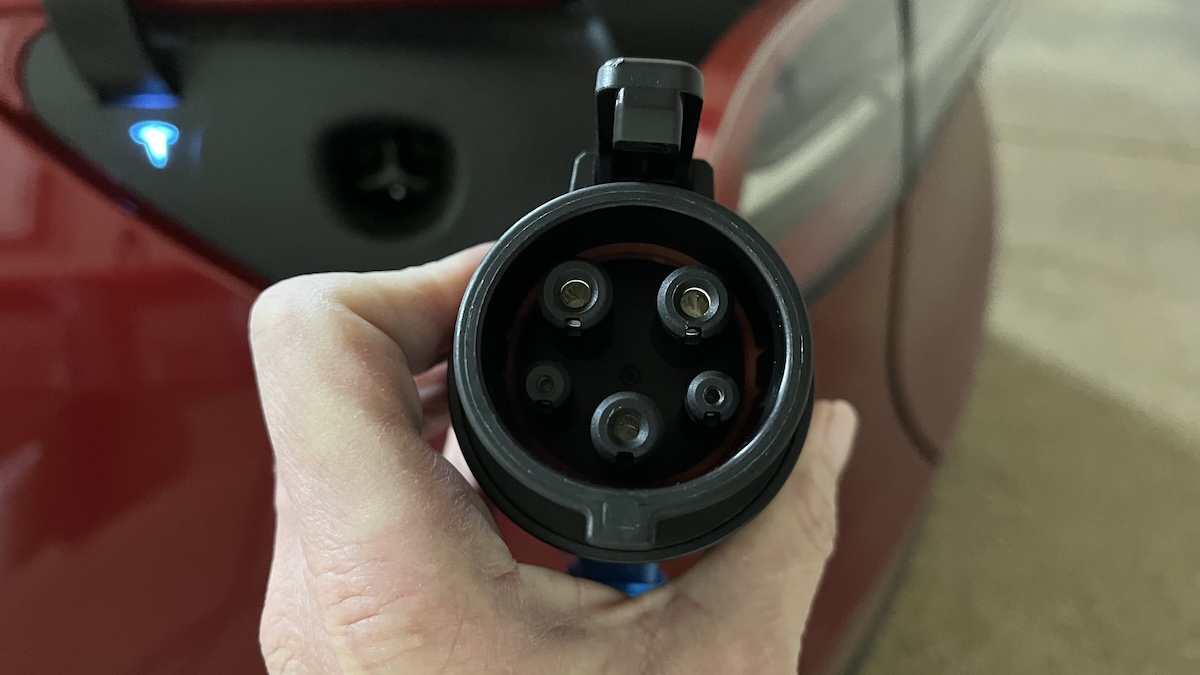
CCS end of the adapter. Photo: Sara Lacey
First, an Overview of Charging
Home charging starts with AC. An electric car is plugged in, the alternating current goes into the car and the car has a converter in it that converts the AC to DC, and stores that power in a battery. This is a slow system, but it’s just fine for charging at home because you can plug that EV in and let it charge overnight. There are also AC charging stations out in public, but they are very slow, and not something you would want to use as a quick fill-up or even a top-off.
DC fast charging is found at public stations. It takes an AC current and converts it at the “pump” before sending it to your car, eliminating the AC conversion process that normally happens on board the EV when you’re at home. That is why EV charging happens more quickly when you’re out in the world, “filling up” your EV typically between 20 and 40 minutes.
But here, you can see why home charging is so desirable. It’s less expensive, and it works while you’re sleeping.
Related: Charging an Electric Car is as Easy as 1, 2, 3
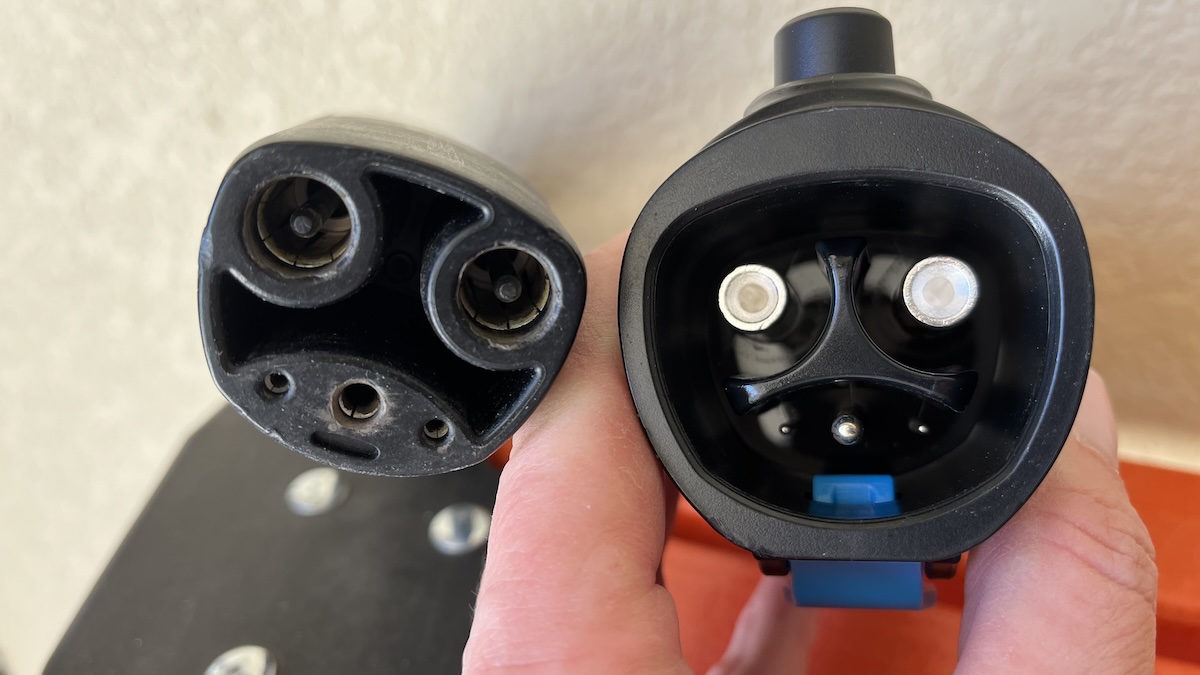
End of the Tesla connector and the NACS end of the EV charging adapter. Photo: Sara Lacey
Different Connectors Can Cause Confusion
In a nutshell, there are different types of connectors for EVs. Think of the connectors as the plug, and the car itself has the outlet or receiver. Tesla uses the North American Charging Standard or NACS. Other manufacturers use a couple of different options. For DC charging, there is CHAdeMO and CCS. For AC charging, there is the J1772 setup. These have a different prong layout than NACS. So, it makes it impossible to charge your car with any of these other setups at a Tesla (NACS) station or at a home with a Tesla (NACS) charger. This is why an adapter is needed.
My Tesla came with an adapter to use at non-Tesla public stations, and it is easy to use.
Related: 2023 BMW XM: A Swanky Batcave of a Car, er, Plug-in Electric Hybrid SUV
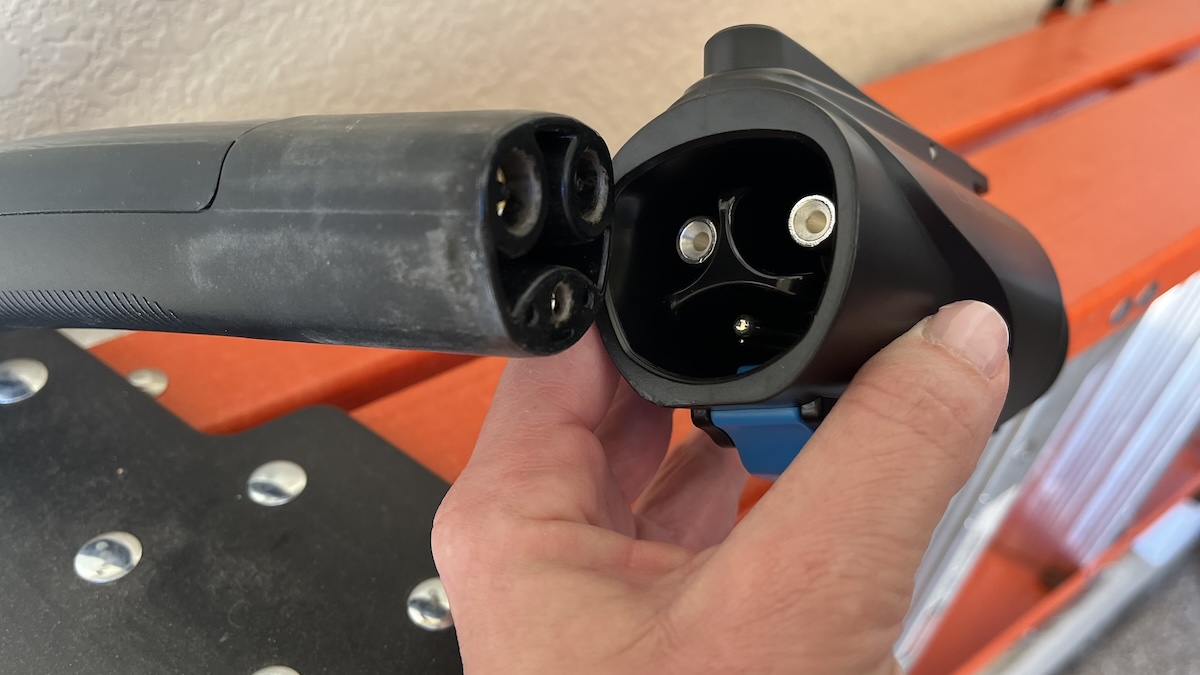
Putting the EV charging ends together. Photo: Sara Lacey
I was a Little Worried about Using the Adapter at First
I am not an electrical engineer or electrician, so I was a bit nervous about using my EV charging adapter for the first time. I wondered if I would blow a circuit or fry my car. But using the adapter is just a matter of making sure the plugs match and not about converting any sort of current. In a move that is very typical of me, I worried needlessly. Yes, I understand that I was nervous despite having used my Tesla adapter out in the world without any problems.
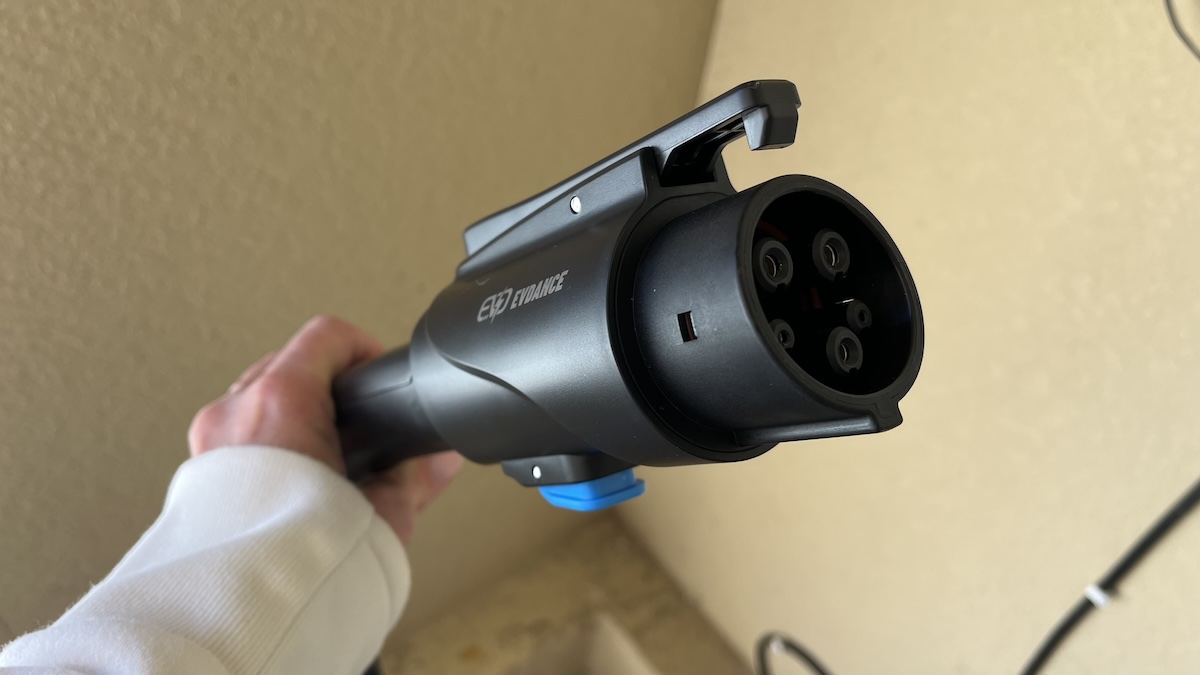
The two pieces are put together. Photo: Sara Lacey
How Does the Adapter Work?
The charger I have is the EVDANCE Tesla to J1772 Charging Adapter. It is so easy to use, and at $89 it didn’t break the bank for me. First, I slide one side of the adapter on the end of the Tesla connector; it clicks into place with a locking lever.

The two EV charging pieces put together. Photo: Sara Lacey
Then I just plug the other end into the EV that needs charging. It also has a locking clip to secure it to the car so that the charger doesn’t fall out. I charge the EV up, and remove the charger, and then unclip the adapter from my Tesla connector. It’s that simple.
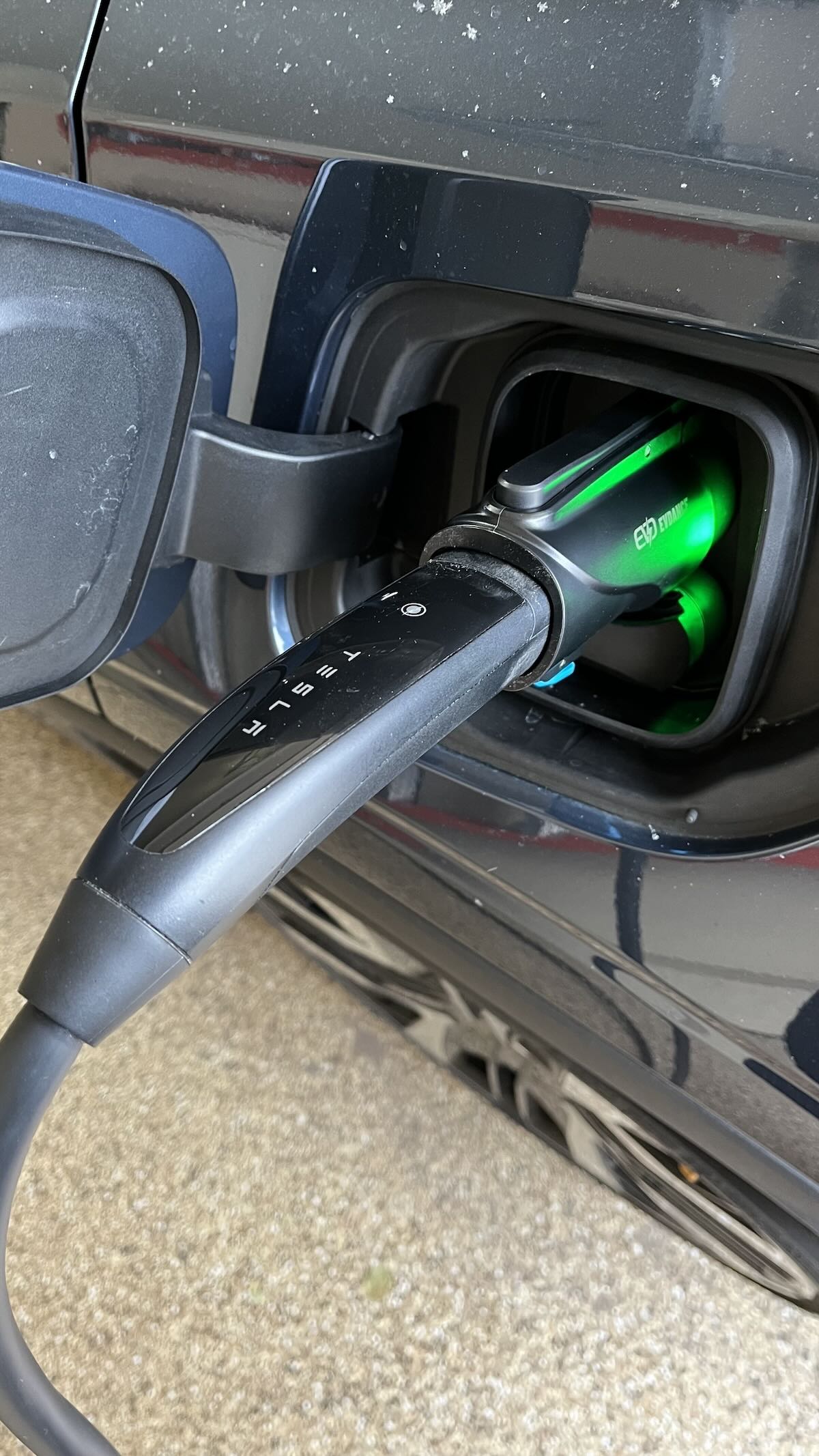
Tesla charger connector with adapter attached, charging a Polestar 2. Photo: Sara Lacey
Now, I can have different types of EVs if I want. If friends with EVs come to stay with me, they can charge up at my house. And, of course, I can test all kinds of new EVs without worrying about the local charging station being full, too slow, or inoperable when I need it.
Have a thought or comment? Share it with us on social media! You can find us on Instagram, Facebook, Twitter and LinkedIn. And be sure to sign up for our email newsletter!
